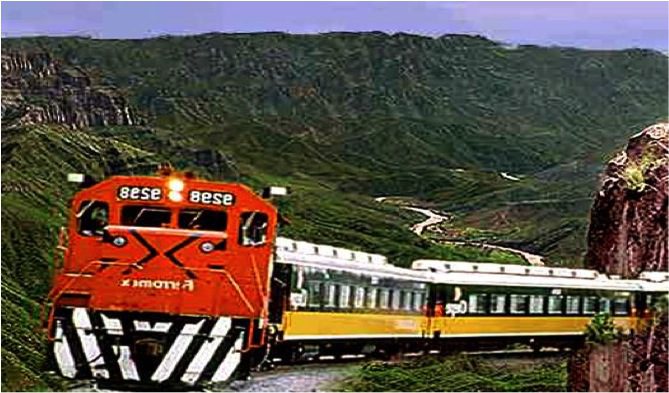Inducted in 2014
The Ferrocarril Chihuahua al Pacífico – also known as the Chihuahua-Pacific Railway, has operated over 418 miles (673 kilometers) of track since the railway’s final completion in 1961.
The completion of the Ferrocarril Chihuahua al Pacifico achieved a longstanding objective of the Mexican people – linking the city of Chihuahua to the port of Topolobampo, in the city of Los Mochis, Sinaloa. Initially envisioned by General Manuel Gonzalez, the President of Mexico, in 1880, the construction project received an official concession by the Government of Mexico on November 13, 1884, granting a right-of-construction up to 1,100 kilometers. Faced with an uncertain economic future, the railroad was ultimately constructed not by Mexican authorities, but by U.S. railway executive Arthur Stillwell, of Kansas City, in the early 20th century.
Due to the substantial financial investment required to construct a railway through the rugged terrain of northwest Mexico, the Ferrocarril Chihuahua al Pacifico was not realized until the 1961 transfer of the railway to the Government of Mexico.
Exploiting a system of 37 bridges and 86 tunnels to achieve its objective, the Ferrocarril Chihuahua al Pacifico was a testament to the determination of generations who sought to link urban and rural Mexican localities in the northwest portion of the country.
In 1998, a private railroad consortium, Ferromex, purchased the Ferrocarril Chihuahua al Pacifico from the Mexican government, making Ferromex the largest railroad by tonnage in Mexico. Today, the absorbed Ferrocarril Chihuahua al Pacifico operates two daily services in both directions as a subsidiary of Ferromex – the first-class “Primera,” primarily a tourist rail service, and the second-class “Economica,” which operates at half the price and at a reduced speed with numerous rural stops.


